Newport Wetlands, Friday, 19th February 2016
Jonny and I have been helping with a project being carried out by the Wildfowl and Wetlands Trust, in conjunction with the BTO, to monitor the movements of certain species of wader and wildfowl visiting the Newport Wetlands area. Newport Wetlands was created as a reserve to make up for the loss of the mudflats and feeding grounds resulting from the Cardiff Bay barrage and associated works. Birds have been caught using cannon nets and 15 specimens from each target species have been fitted with UHF transmitters. These are being used to map the movements of the birds around the area: some Shelduck have already been found to have moved across the Severn Estuary to the north Gloucestershire side and back again. It looks like some interesting information is already coming out of the project.
Yesterday I was part of a group setting out for a cannon netting session focusing on Teal and Wigeon. We didn’t get to fire, as the duck never settled in sufficient numbers to warrant the firing, so we arranged to meet again this morning. Yesterday wasn't a write off: there were half-a-dozen Cetti's Warbler singing in and around the hedgerows and reed bed. There was a particularly fine Little Egret wading along the edge of the water. It was sporting a lovely set of head plumes. As the area we were working in is not open to the public the kit could be left in place overnight. As luck would have it, we got a firing off an hour after we arrived.
We caught 4 x Canada Goose; 1 x Coot; 17 x Wigeon and 19 x Teal. 15 of the Teal and 16 of the Wigeon were fitted with UHF transmitters. You can see the antenna from one of the transmitters on the back of the bird below.
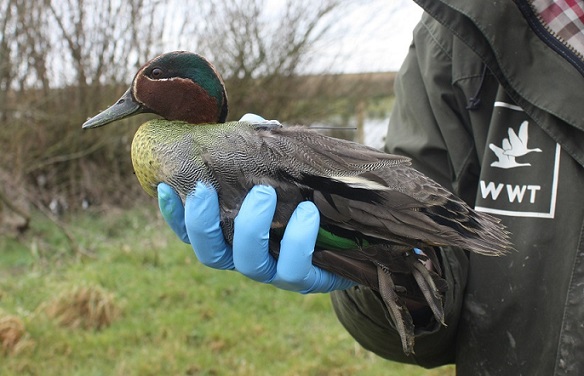
I got to ring one of the Canada Geese, the Coot, 2 of the Teal and 4 of the Wigeon. In so doing, I added 3 new species to my ringing list (I have done Teal before) and am now on 96 species ringed.
There could be a few confused birders over the next few weeks. As you might notice, this bird has a yellow front. All of the tagged birds were painted with Picric Acid, which dries bright yellow. There has already been some feedback about Shelduck with yellow-necks on the WWT blog (Jonny ringed 18 of them on a previous cannon netting session), which were given the same treatment.
The Coot was given to me to do because I had expressed the opinion that they could not be worse to handle than Moorhens . Well, I was right. The Coot, despite its intensely aggressive nature, was actually very easy to work with and a couple of the older, more experienced hands were clearly disappointed that I got away without damage to my person and without being covered in copious amounts of Coot poo.
The Canada Goose was very strong, and needed controlling whilst being processed. I used the Mute Swan method of controlling a large bird – and, essentially, sat on it. Whilst I was a little concerned about exactly where the head and bill were positioned, no damage ensued to either party, we both retained our dignity, and it was successfully processed. They are large birds, with a lot of guano storage capability. As with the the Coot, I was able to avoid the inevitable spray of Canada Goose guano as I released it: the only one who ringed a Canada Goose who managed to avoid that fate. I guess I must be lucky. ST

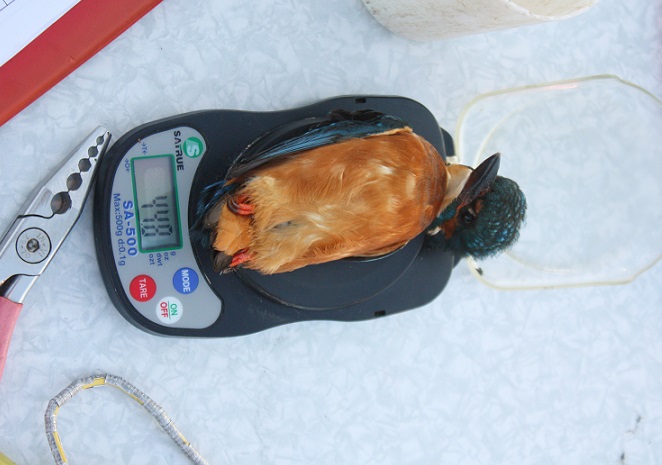
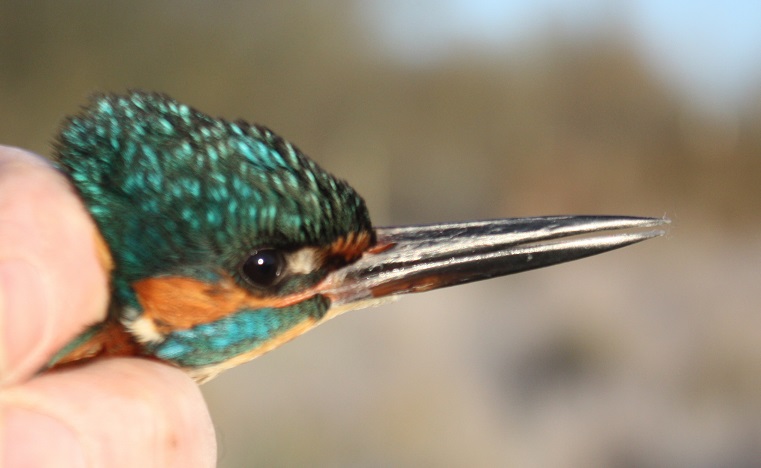
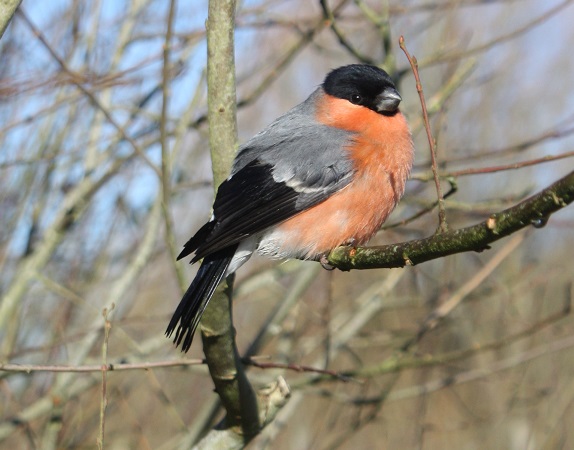
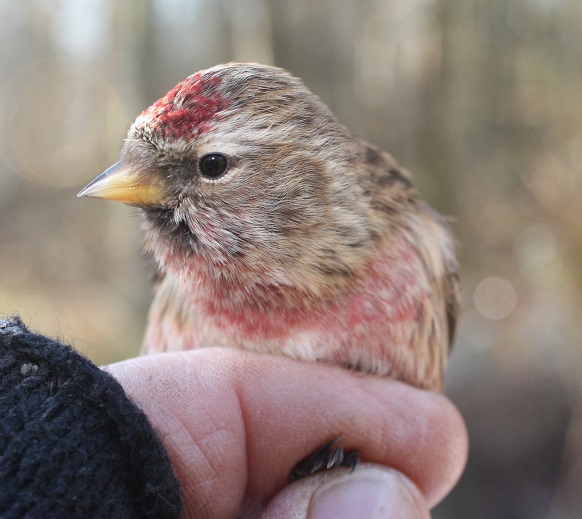
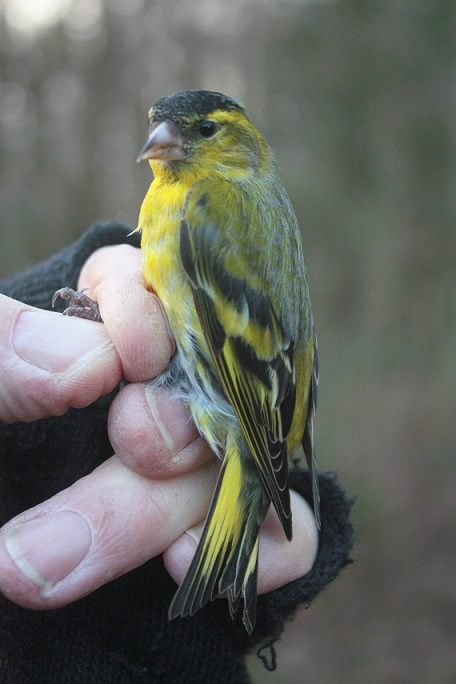
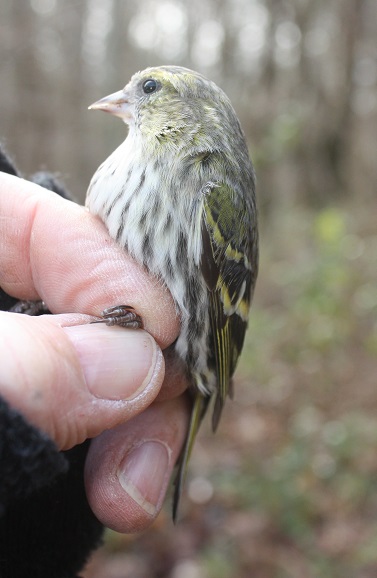
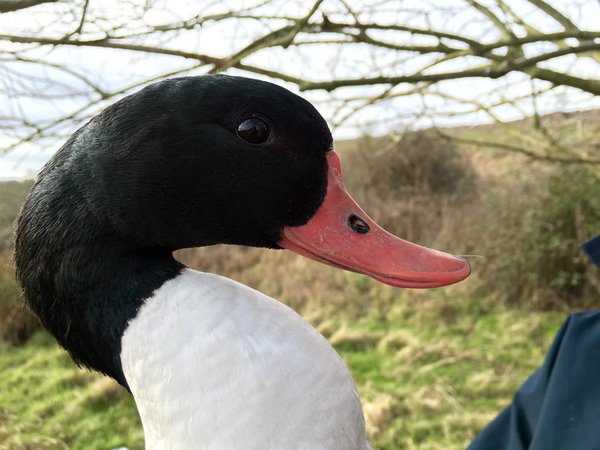
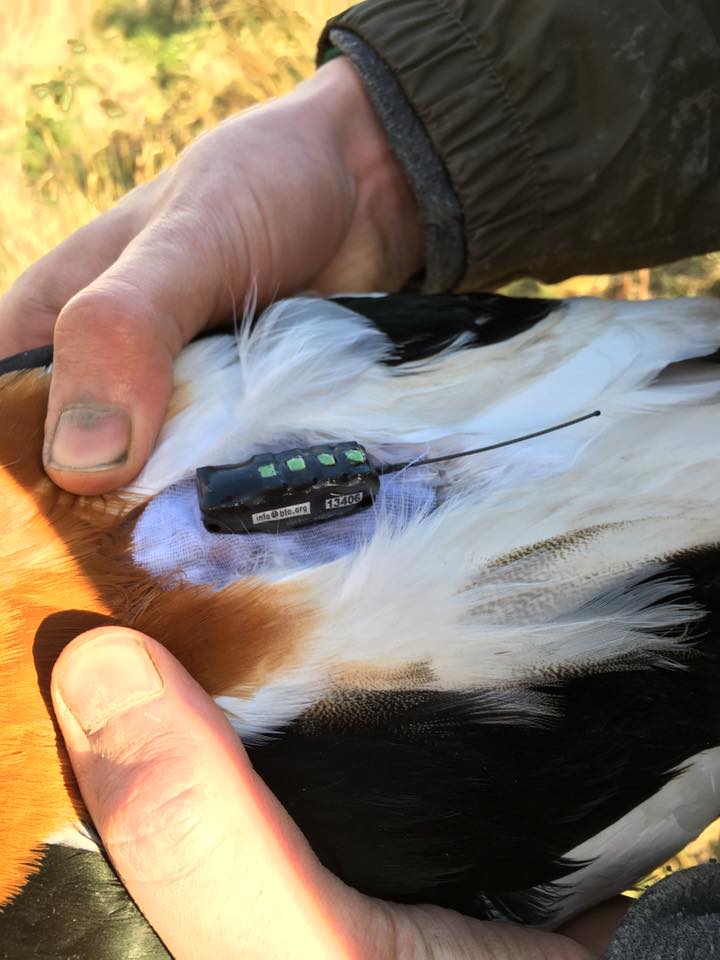 ST
ST